#Louise Lorimer
Explore tagged Tumblr posts
Photo

Character Actress
Louise Lorimer (born Louise Knapp Pinkham, July 14, 1898 – August 12, 1995) Actress who played character roles on Broadway, in films, and on television in a career lasting over six decades.
On television, she played Stagecoach Sal in the western Hopalong Cassidy. She appeared in The Lone Ranger (TV series) episode (1/16) "Cannonball McKay" as the named character (1949). She appeared in many other series, including Dragnet (1955–58), Dennis the Menace (1959–61), Window on Main Street (1961–62), and Perry Mason (1958-62). Lorimer was close friends with actress Shirley Booth and made multiple appearances on the tv series Hazel as George Baxter’s mother.
In addition to appearing in the TV series Alfred Hitchcock Presents, she had a small role in Alfred Hitchcock's 1964 film Marnie. She continued appearing on television into her 80s, including the pilot of the 1978 series Battlestar Galactica ("Saga of a Star World").
Her other television credits include:
Racket Squad
Adventures of Wild Bill Hickok
Death Valley Days
The Range Rider
Chevron Theatre
The Loretta Young Show
The Gene Autry Show
Fireside Theatre
The George Burns and Gracie Allen Show
The Danny Thomas Show
The Ray Milland Show
Big Town
Where’s Raymond
It’s A Great Life
Public Defender
The Lineup
December Bride
Buffalo Bill Jr.
The Millionaire
How to Marry a Millionaire
Wanted: Dead or Alive
Father Knows Best
Rescue 8
The Life and Legend of Wyatt Earp
Hawaiian Eye
The Case of the Dangerous Robin
Lockup
One Step Beyond
Surfside 6
Angel
The Everglades
Checkmate
87th Precinct
Ben Casey
The Eleventh Hour
G.E. True
Kraft Suspense Theater
Profiles in Courage
The Rogues
Hank
The Beverly Hillbillies
Batman
Bonanza
That Girl
Green Acres
Marcus Welby, M.D.
Land of the Giants
Adam-12
The Waltons
McMillan & Wife
Quincy, M.E.
2 notes
·
View notes
Text

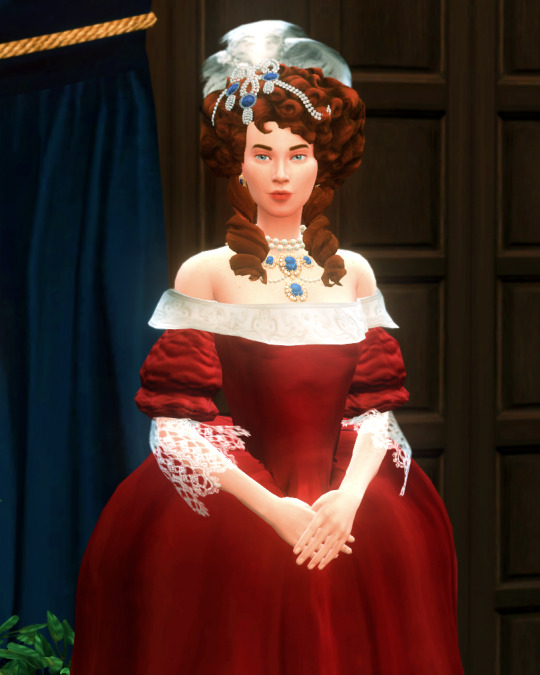
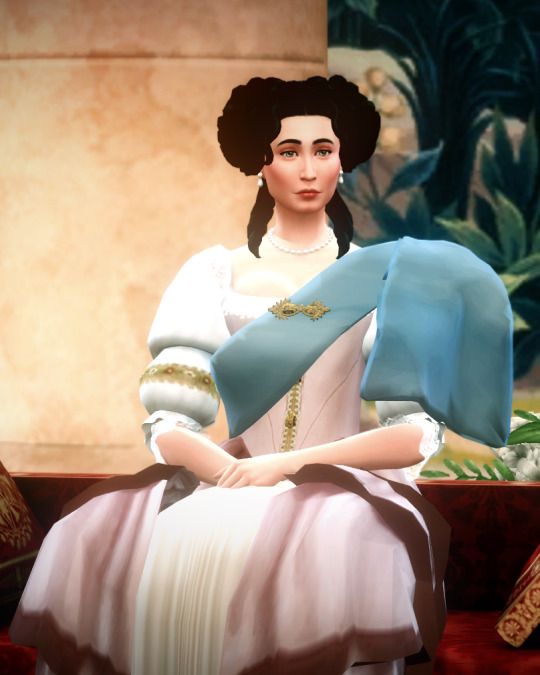
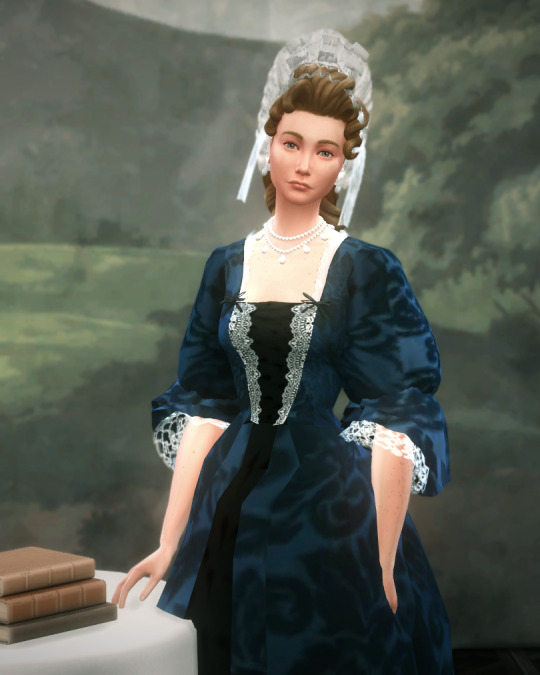
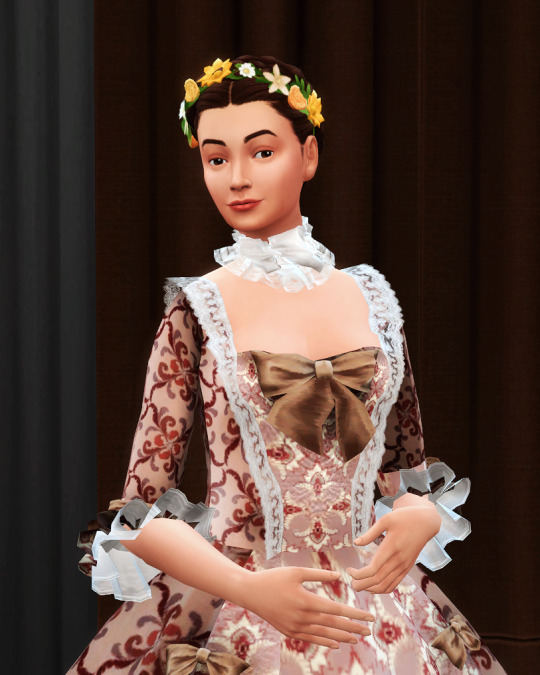
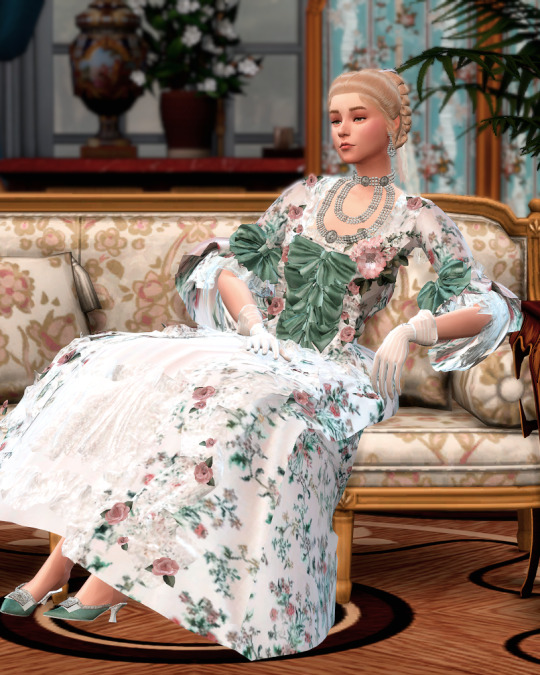
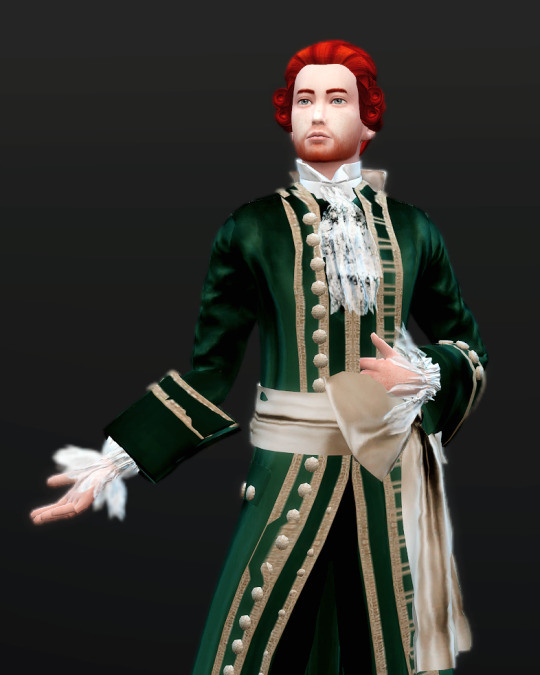
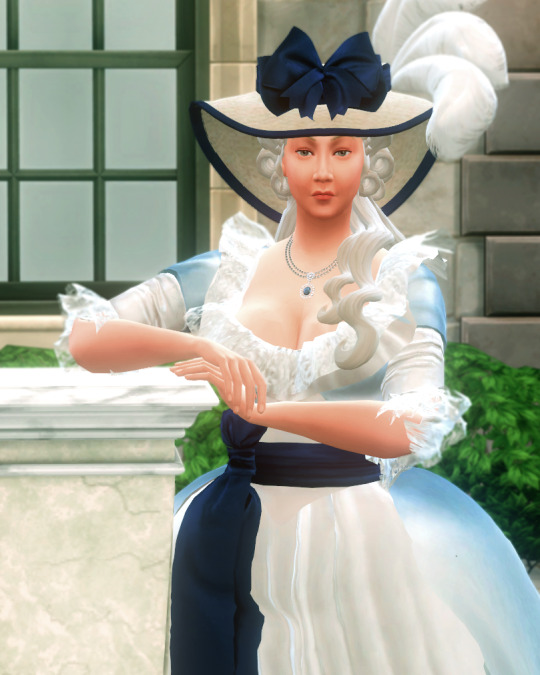

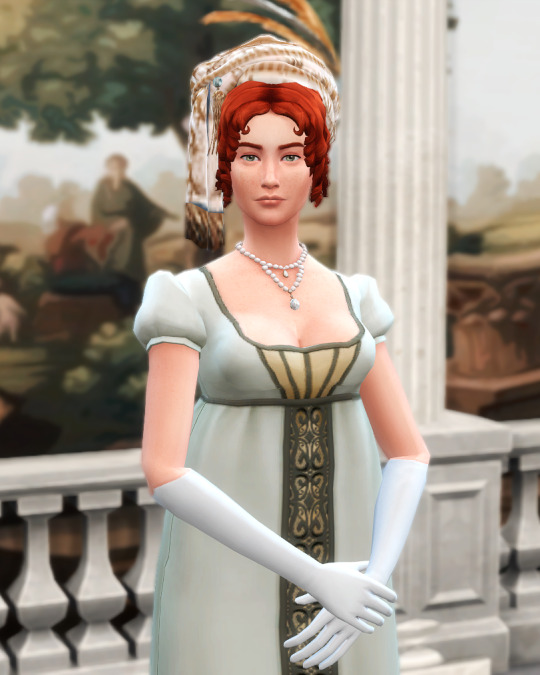
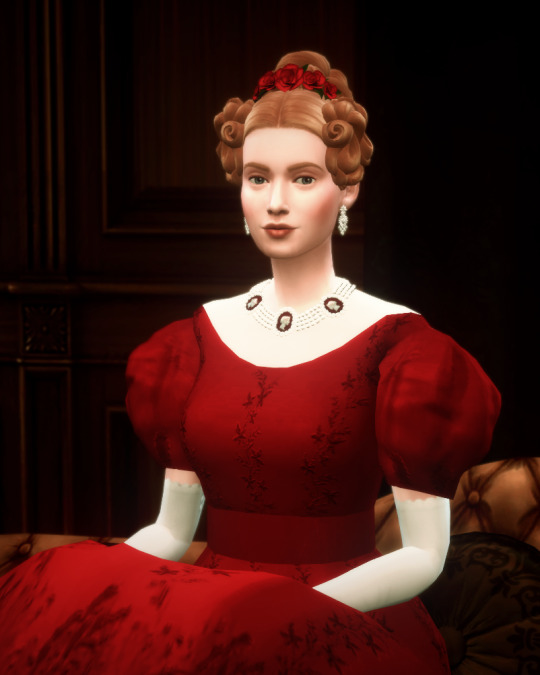
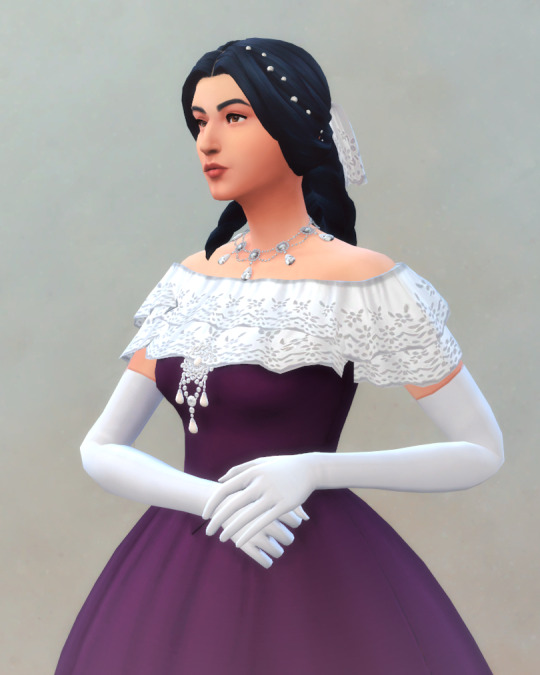
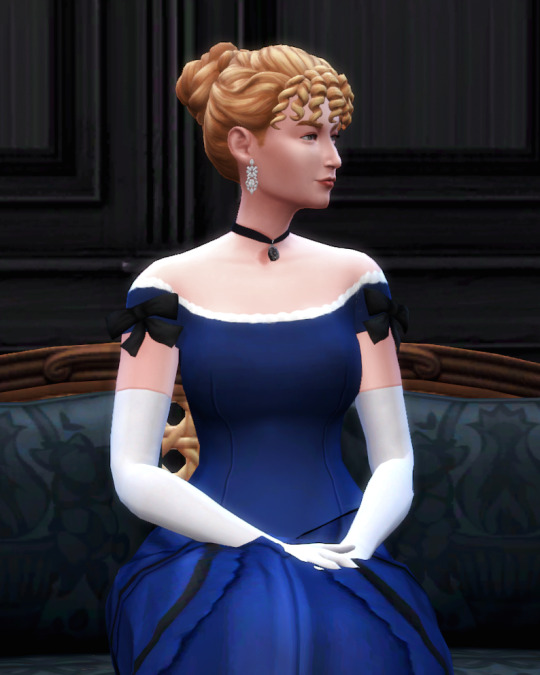
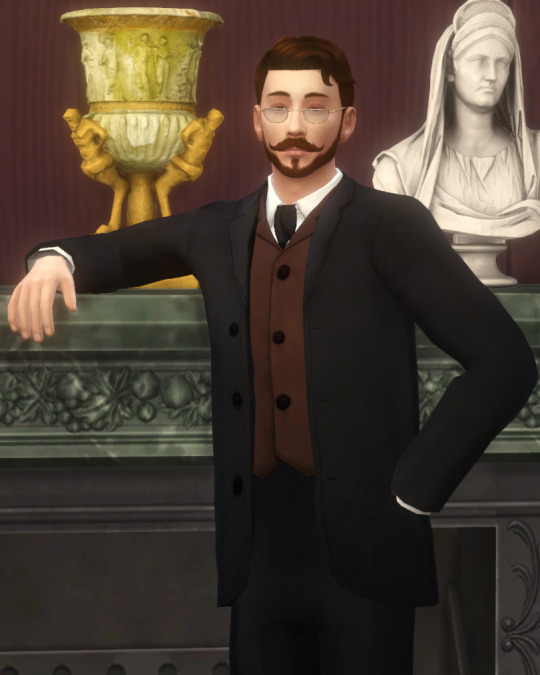
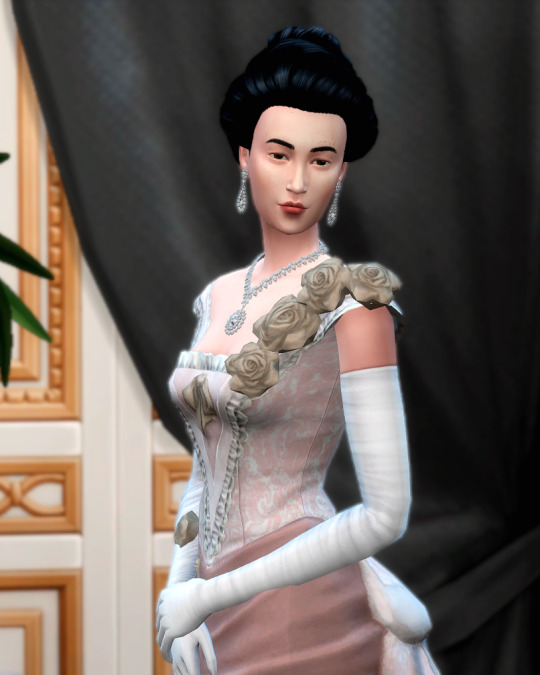
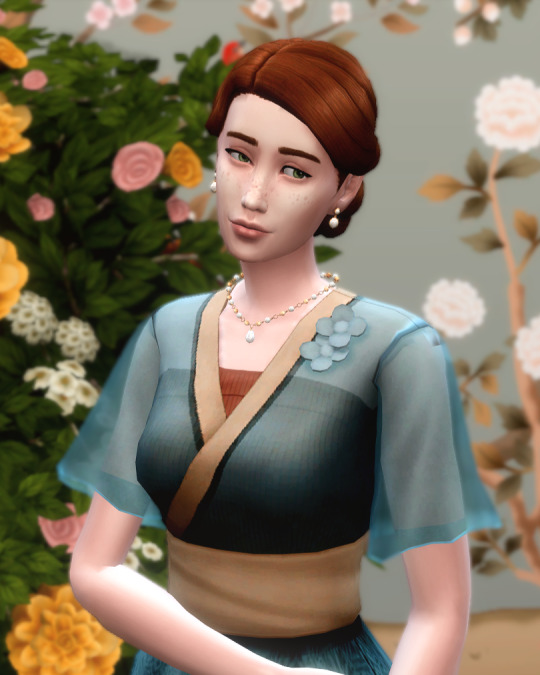
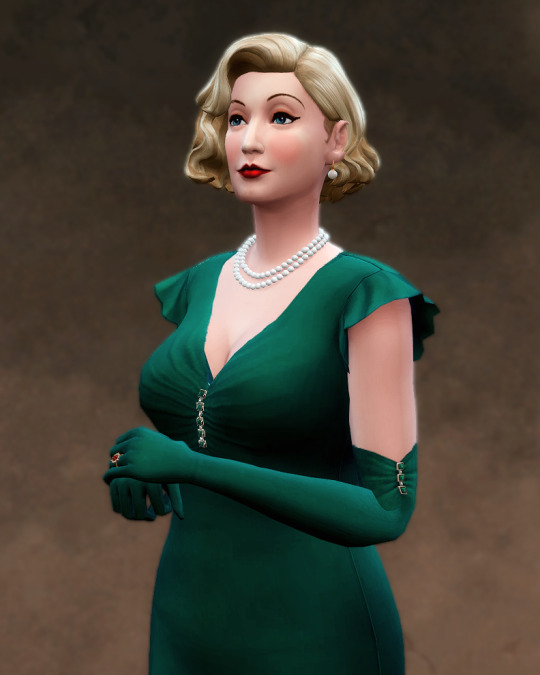


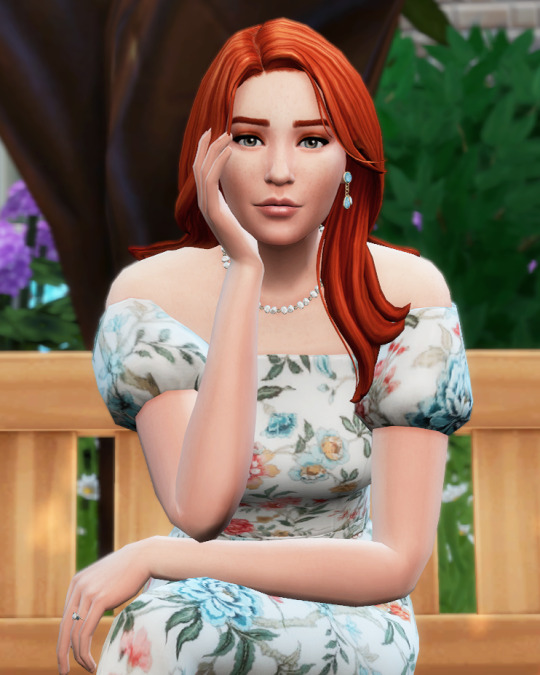
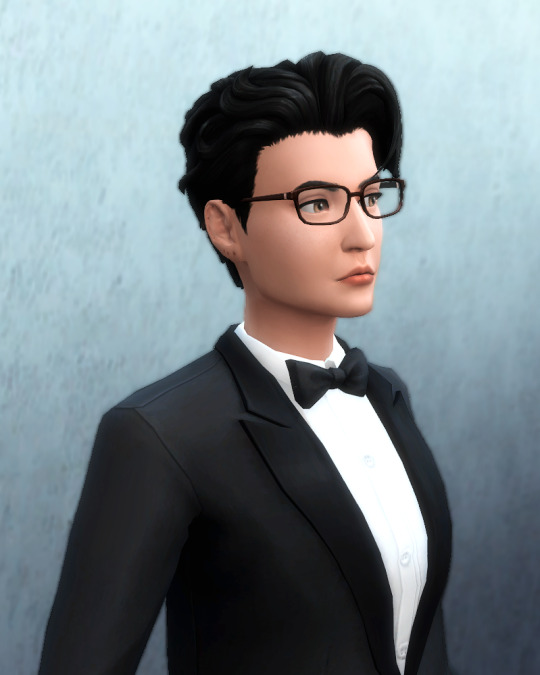
Royal Consorts (and almost-Consorts) of the House of Lorimer
1. Charlotte (1616-1667) - Philip I 2. Henrietta (1638-1729) - Charles III 3. Anne (1668-1690) - Philip II ✻ 4. Theodora (1675-1766) - Philip II (second wife) 5. Cosima (1701-1721) - Frederick I ✻ 6. Louise (1704-1782) - Edward IV 7. Patrick (1724-1796) - Augusta 8. Adelaide (1757-1833) - Arthur IV 9. Aveline (1780-1839) - Crown Prince Charles ✻ 10. Georgiana (1781-1866) - Frederick II 11. Joan (1805-1854) - Charles IV 12. Mary Josephine (1838-1902) - Philip III 13. Elizabeth (1865-1896) - Frederick III 14. Ernest (1887-1958) - Jane II ✻ 15. Catherine (1873-1975) - Richard V 16. Frances (1897-1924) - Arthur V ✻ 17. Alice (1905-1966) - Arthur V (second wife) 18. Rosamund (1927-) - Frederick IV 19. Laura (1956-) - Arthur VI 20. Natalie (1977-) - Crown Prince Richard ✻ 21. Carys (1995-) - Matilda II ✻
✻ indicates royal consorts that were never crowned
post inspired by @warwickroyals 💙
#the lorimers#sims 4#ts4 royalty#sims 4 historical#sims 4 baroque#sims 4 rococo#sims 4 regency#sims 4 victorian#ive been obsessed with that one post by ayanna for MONTHS now#very happy to finally make a version of it for my own story!#this took so much work but it was totally worth it#still not gonna tag all these sims tho#bluep.txt
78 notes
·
View notes
Video
🎬Sally Parr | Patrick Waltz | The Sun S
he Sun Sets at Dawn is a 1950 American film noir crime film directed by Paul Sloane and starring Sally Parr and Patrick Waltz. The movie is based on a real-life incident A young man is sentenced to death by electric chair, this is the state's first electric chair execution. Due to problems with the chair, the execution is postponed and the real criminal is revealed. The movie infers that this was all due to a divine miracle. This is the full movie classic from 1950. CAST Sally Parr as The Girl Philip Shawn as The Boy Walter Reed as The Chaplain Lee Fredericks as Blackie / Farucco Houseley Stevenson as Pops Howard St. John as The Warden Louise Lorimer as The Warden's Wife Raymond Bramley as The Deputy Warden Charles Meredith as Reporter, AP King Donovan as Reporter, National News Service Charles Arnt as Reporter, Globe Express Sam Edwards as Reporter, Herald Percy Helton as Reporter, Feature Syndicate Never miss a video. Join the channel so that Mr. P can notify you when new videos are uploaded: https://www.youtube.com/@nrpsmovieclassics ets At Dawn (1950) | Film Noir | ...
0 notes
Text

(L-R) Shirley Yamaguchi, Don Taylor, and Louise Lorimer in Japanese War Bride (1952)
3 notes
·
View notes
Text
Marnie (1964)
A film by who starring who and who…‽
Here we go again with Alfred Hitchcock doing a film involving psychosis. This time it has a woman plagued by something in her past, manifesting itself through colour triggers — specifically red, plus stroboscopic light — as well as a complicated relationship with her distant mother.

Mr Hitchcock has a thing about men not only being in charge, but deciding when marriage will be engaged in. Plus, Sean Connery’s character forces the issue through extortion / blackmail (I’m never sure which is which).
There’s a lot going on in this story. Much of it is dangerously out of date now (much more about this in a minute), but it has a somewhat supportive approach to the mentally damaged. The method through which we get to that is quite easily the most villainous and illegal thing he’s ever put in a film. More than anything, everyone in this film — bar none — needs intense counselling, because, boy howdy! DO THEY HAVE ISSUES!
On Mark's (Sir Sean Connery's) attempts to cure Marnie (Tippi Hedren): ‘The film works with a simplistic and reductive Freudian scheme of revelation of trauma followed by instant catharsis and cure: a pattern familiar from many Hollywood films of the post war period. Marnie defends herself against Mark's controlling attempt: it brings under control the dangerously independent stance of both mother and daughter who articulate hatred of men, who despise sex, and want to live without men.’ — E. Anne Kaplan: “Motherhood and Representation” in Psychoanalysis and Cinema"; 1990.)
This is hardly the first time Mr Hitchcock has dealt with psychology-centred plot lines; they feature prominently in 1945’s Spellbound — where Ingrid Bergman played the analyst helping Gregory Peck revealed a repressed memory — as well as Psycho, and were certainly a topic of current interest and exploration by this time. Film, like any art, reflects both the fascination and proclivities of its time.

From left: Tippi Hedren, Sean Connery, Louise Lorimer, Martin Gabel, and Diane Baker in Marnie (1964).
But, in the end, this is the most disturbing film I’ve seen since watching American History X a few weeks ago; and not for any reason intended by Mr Hitchcock. The messages encoded in the plot — and I originally had six things listed here before running out of steam; one of the most troubling being “husbands have supremacy over their wife’s body” — are far more dangerous and insidious than anything in A Clockwork Orange. That latter film has the advantage of at least being honest about how awful the acts in it are; in addition to having the defence that they are presented as part of a satire. The activities in Marnie which we are supposed to pay attention to have little to do with any of the troubling parts of the film. If there is any part of his œvre which Mr Hitchcock should be embarrassed by, or regret, it starts with this. Even a token “kids, don’t try this at home” statement would be better than what we have here.
I have no intention of watching this film again, as I have spent the 24 hours since seeing it for the first time becoming more and more disturbed by its recollection. There’s a documentary which is part of this disc’s ‘extra features’ which I may watch in hopes that the title indicates people’s disconcerting feelings now about its creation, as it’s called “The Trouble with Marnie.” There are many troubling things here.
★☆☆☆☆
0 notes
Text
May 2017 Birth Announcements
Welcome to all the babies born in the month of May this year! These announcements consist of names submitted to The Name Garden, as well as names announced online over the past month. Congratulations to all the parents.
Ethan David
Clemency Jane Frances
William Huntington
Kit Wilfred Lorimer
Arthur James Christophe
Percy George
Phoebe Margareta Rose
Luna Rose
Hugo Montgomery Benjamin
Humphrey George Alfred
Ralph Christian Curtis
Max Daine
Leonora Olympia Rose
Montgomery Aubrey Oliver
Johannes Alfred Mark
Isabella Mae
Matthew James
Charlotte Jane
Iona Fabregat
Farley James
Edward Jeremy "Ted"
Maximilian François
Abbigail Catherine
Oscar André
Freda Beatrice
Oliver Alastair Eyvind
Zara Marie-Louise and Theo John Moritz
Amber Joy
Lily Carmen Rose
Malek Zakaria Wafic
Felix Culvinor Musgrove
Ivy Margaret Celia
Rufus James Laidlay
Archie Charles Wilbur
Wilfred Sonny
If you have a name that you’d like on The Name Garden’s Birth Announcements page, please submit it here.
7 notes
·
View notes
Text
The Theory of Reader-Response Criticism
THE DEFINITION OF READER-RESPONSE CRITICISM
Reader-response criticism is a theory that concerns with reader’s reaction to the text. Reader’s reaction is considered vital in this literary theory in order to interpret the meaning of the text. In order to understand the meaning of the text, the reader should engage with the text and understand the context first. The reader, text, and context are the main elements that always work together in reader-response approach. In this theory, the focus would be on the role of the reader in constructing the meaning of a work of literature (“Reader-Response Criticism”). Moreover, reader-response theorists realize that texts do not interpret themselves because it is the reader who assigning meaning to the text. This is coherent with Susan Suleiman’s definition as she refers to this theory as representing critical methods that define the reader as a “maker of meaning” (1).
Meanwhile, Lois Tyson also has given a definition regarding the reader-response theory. He said, “Reader-response theory…maintains that what a text is cannot be separated from what is does…”. Hence, other lenses such as feminist, psychoanalytic, and structuralist can use this approach as they share common ground and maintains the principle that Tyson had said earlier. He also highlighted that, reader-response theorist shared two beliefs which are, the role of the reader cannot omit from our understanding of literature and that readers do not passively consume the meaning presented to them by an objective literary text (“Reader-Response Criticism”).
Furthermore, Dobie defines reader-response approaches as an approach that is not limited to only one field but it can cover such a wide variety of concerns that sometimes it may look like a chaotic mix of theories that may or may not have anything to do with each other (131). The reason various theories jumble up is, they actually adhere to the common principle as mentioned by Tyson earlier. However, in this case, Dobie said, those various fields of theories agree on the principle that, the effect that work has on a reader and the strategies produce the effect (132).
In addition, reader-response criticism involves the personal engagement of the reader. This is due to, meaning created by the reader after engaging with the text would be influenced by their personal experience, knowledge, their identity, worldview and so on. The act of reading is actually the interpretation of meaning. Thus, by having many interpretations of the same text by the different reader or numerous interpretations by a single at different times can lead to developing creation of literary work (Dobie, 132). This theory was also used in Lorimer work as she combines a feminist theory of dialogics with reader-response approaches to analyzing texts (43).
However, there are some people claim that this theory is quite complicated because each person has a different response to the text and not everyone has the same reaction when reading certain text. To illustrate, according to Mailloux, the cartoon on the cover of Reader-Response Criticism shows two people reading over the shoulders of a third person. The readers are responding differently to the text. One of them is crying, another one is laughing and the other seems unexpressive. This cartoon nicely captures a different response to a text which is also a problem in reader-response criticism (1149).
HISTORICAL BACKGROUND
Reader-response criticism is a theory that caught people’s attention in between the 1960s to the 1980's which for the first time in history that focuses on the readers’ perception, reaction and emotions more than the text itself. The theory first developed in the west mainly in German and The United States of America and the main theorists include Roland Barthes, Norman Holland, Wolfgang Iser, Stanley Fish, and many others.
The world renowned Athenian philosophers, Plato and Aristotle were aware of this theory way before it was formally made into a theory in the 1960s and in fact they were fully aware of the impact and power of words which can both empower or destruct a reader or the community as a whole. According to Dobie, both Plato and Aristotle have explored this field from the ground and have influenced some other prominent advocates such as Longinus, Cicero, Quintilian, and also other recent rhetoricians in choosing the way to convey and attract the attention of a particular society or a group of people (130).
As mentioned by Wright, the reader-response criticism can actually be found from the work I. A. Richards and Louise Rosenblatt’s back in the 1920s to 1930s (534). Richard, who is a well-known English educator back in his days assigned his students to analyze and respond to a number of short poems. However, he decided to drop the approach since he finds his students’ analyzation is not close to the correct interpretation of the poem (Dobie 130).
On the other hand, Rosenblatt presented a “transactional” theory which was totally rejected by the people of those days since she tried to convince the people that different readers will have a different interpretation of the text (Marhaeni 207). As mentioned by Dobie, “readings vary with the purpose, needs, experiences, and concerns of the reader, who adopts a “stance” toward a text, an attitude that determines what signals to respond to, so that certain results can be achieved” (130). Rosenblatt is a believer of the aesthetic way of interpreting a text as it involves emotions, feelings, and senses which can make a reader to dive into the work of an author and compare it to their own lives which makes it even more realistic and gives life to the dead text.
The topic of reader-response criticism again gained attention with the emergence of Wayne Booth and Walker Gibson who questioned on where and how the meaning of a particular work is generated. More questions have later engulfed the minds of the literary theorists; Does a reader has full control over a text or is it a combination of both the interpretation of the author as well as the reader?
Literary theorists later came to a mutual understanding that readers’ interpretation of a text is assumed to be an act of reading which ultimately gave the authority to the reader and not the writer. The readers in the upcoming eras realize that there is no one right interpretation of a text and hence they started to put in their own emotions, feelings, senses, and moods too and get fully immersed in the writing. Readers were able to bring forward different connotations of a text to the table which also means there will not be any duplicated interpretations since everyone has different ideas.
MAKING A READER’S RESPONSE: INTERACTING WITH THE TEXT
a) The text acts on the reader
A text is not merely a bunch of written words and a reader is not just a person who reads the text. A relationship must occur between a text and a reader to make meanings.
A text has the capability to control readers’ responses. How it produces effects on the reader is determined by the grammar used by the author. Grammar and vocabulary can cause readers to act and respond in certain ways in the production of meaning. A reader with less understanding and knowledge of grammar and vocabulary would not understand a text that is constructed with a complicated set of rules which governs and limits them in interpreting the text. Dobie stated that a reader’s ability in grammar depends on the reading background and personal experience (133).
Other than that, other factors such as settings and word choice used by the author can create a sense in the reader. As human beings are gifted to imagine, feel, smell and even taste what they read, authors commonly use this to control the reader as well as to enhance their writing. Every detailed description in a text can dominate readers’ responses. For example, words such as “dark”, “Rambo”, and “homicide” imply an imagination of a victim and investigations. Some readers who have experienced situations or have knowledge regarding cases might imagine a situation of a killing scene near a dark road, filled with the police, ambulance and a dead body in a black-body bag lying on the street. This shows that previous experience with a certain genre or situation can build up responses towards a text while reading it. Hence, the reader uses the experience and knowledge to predict what comes next in the text.
However, authors can fool the readers. Authors could use a typical storyline in their text that allows readers to have their predictable responses which later prove to be wrong through a plot twist. This is also one of the ways on how text produces a response in the reader.
b) The reader acts on the text
The second linear process is on how the reader interprets the text. Everyone is varied from each other thus the same thing goes with the interpretation.
A reader can be considered as the master or chief of their own interpretation since they are free to interpret the text as they want. This is because qualities such as age, gender, beliefs, and past readings shape the interpretation of the text.
This also can be said as recreating the text in our own desired image which leads to the statement said by Holland that interpretation is subjective, not because of the text lacking in several qualities or themes but due to readers’ primary identity (qtd. in Dobie 135). However, when a reader reads more texts, stories or books of an author, he or she will become familiar with the writing style. Readers who probably expecting something different in new texts, stories or books produced by the author might later realize that it is not much different. Hence, the way the reader interprets text could become varies.
This proves that a text could mean anything depending on the reader. Just like personalities, interpretations are not rigid and fixed to any certain rules. Readers are free to create and interpret the meaning according to their understanding.
c) The transactional model
The transactional model is a theoretical framework developed by Louise Michelle Rosenblatt. It proposes the idea of the reader and the literary text share a close relationship, where each affects another (Rosenblatt 2). The theory shows how the reader makes meaning of the text and symbols through prior experiences. It is also stated by Rosenblatt that “Human activities and relationships are seen as transactions in which the individual and the social, cultural, and natural elements interfuse” (2). It indicates that the meanings of text reflect readers’ background and personal knowledge.
Similarly, Wolfgang Iser, who is a German phenomenologist said, "Literary texts initiate 'performances' of meaning rather than actually formulating meanings themselves" (19). Without the reader, the text will remain as random letters on paper. It will not be recognized as a literary text until a reader considers or makes it as one. Likewise, without the text, there will be no literary text. Therefore, the existence of the text and the reader are equally important in creating meaning of the text or any verbal symbols on a page. Iser in Dobie suggests working closely with visual imagery and emotions one is experiencing in making meanings (137). It is also stated by Iser that no text is created without a purpose, each has intended meaning with expectations of a response from the reader on what has been written (137).
As a part of reader-response criticism, the transactional theory emphasizes the role of the reader. It shares the process of how meaning exists through the readers' personal experiences. Iser in Dobie mentioned that it will be hard to defamiliarize oneself with a text since its meanings were built on existing knowledge (137). It is further explained, one could not simply understand a text through other's experiences and other texts. Only through personal experience, one could grasp the meaning. Hence, this theory encourages readers to bring out their individuality and see how it helps in responding to a literary text.
CONCLUSION
Reader-response analysis is an approach to establish the flexible aesthetic of a published literary work. The author is able to write a good sense of literary works depend on the actual experience of reading from the reader. Interpreting a literary text based on personal experience can make the reader to become closer with the idea presented by the author. However, the connection experienced by the reader occasionally can happen to other readers as well. Thus, reading required many possible interpretations that grows out from a different individual perspective.
Moreover, in the making of a reader’s response analysis that requires an interaction with the text for instance how the reader is affected by the text is not only limited to the understanding of the meanings. Particularly, the expectation from the reading is already influenced by the projection of other elements of interest from the readers. Meaningful work can influence the reader to convey an intensive positive criticism towards the text. The focus is always on the reader’s interpretation. Even though the interpretation of an idea from the text is not always synchronized with other readers but the stance and concerns are shared through individual personal experience.
Generally, every individual possesses a different set of minds. Thus, the way of thinking is different from one another. The perspective might differ contrastively based on various cultural backgrounds and levels of maturity. Thus, the author's goal in producing a great sense of aesthetic reading to the readers is conventional so long it is socially acceptable by the members of the society. The reader is the master of their own interpretation. By making a contextual reader-response analysis on the text can make the author acknowledge how the reader is affected by the work produced by them. All this approach is intended to intellectually criticize the author's point of view.
Works Cited
Dobie, Ann B. Theory into Practice: An Introduction to Literary Criticism. 3rd ed., Cengage learning, 2012.
Iser, Wolfgang. “The Act of Reading A Theory of Aesthetic Response.” EPDF, https://epdf. pub/ the-act-of-reading-a-theory-of-aesthetic-response.html
Johnson, Nancy Jean. “Reader- Response Criticism and The Rhetorical Tradition.” Faculty of The
Graduate School University of Southern California, ProQuest Dissertations Publishing, 1981, pp. 1, https://search.proquest.com/pqdtglobal/docview/1560687529/70C4E040A0F34A74PQ/5?accountid=44024. Accessed on 10 Oct 2019.
Lorimer Lundberg, Patricia. “Gendered Reading Communities: The Feminization of Reader Response
Criticism and a Dialogics of Reading.” Loyola University Chicago, ProQuest Dissertations Publishing, 1989, p. 33-34, https://search.proquest.com/pqdtglobal/docview/303765289/70C4E040A0F34A74PQ/7?accountid=44024 Accessed 9 Oct 2019.
Mailloux, Steven. “Reading in Critical Theory.” The Johns Hopkins University Press, Vol. 96, No. 5,
1981, pp. 1149-1159, www.jstor.org/stable/2906242. Accessed 9 Oct 2019.
Marhaeni, Agung. “Rosenblatt's Transactional Theory and Its Implementation in the Teaching of Integrated Reading”. Jurnal Ilmu Pendidikan, vol. 5, no. 10, 2016, pp. 207.
“Reader Response Criticism.” Reader Response Criticism, https://www.carleton.edu/ departments/ENGL/Alice/CritRead.html. Accessed 8 Oct 2019.
Rosenblatt, Louise M. "Writing and reading: The transactional theory." Center for the Study of Reading Technical Report, no. 416 (1988).
Wright, Terence R. “Reader-Response under Review: Art, Game, or Science?”
Penn State University Press, vol. 29, no. 4, 1995, pp. 534.
0 notes
Text

Hei alle fine! I dag startet konkurransen for meg og det var kjempegøy! Både spennende og litt nervepirrende like før jeg skulle på scenen. Vi startet med en kjapp frokost på hotellrommet og møtte opp på Long Beach Performing Arts Center kl.9, skiftet og fant lister med rom og klokkeslett. Det hele ble forsinket 3-4 timer. Jeg synes generelt at jeg har gjort det bra, spesielt på formal og bikini men på casual kunne det gått bedre. Jeg ble også fornøyd med min monolog som jeg fremførte for 8 dommere og synes det var kjempegøy å se på de andre talentene! Jeg må si det var utrolig høyt nivå og veldig mange dyktige og erfarne ungdommer og voksne med skuespiller-bakgrunn. Jeg blir ikke lei meg hvis jeg ikke går videre til semifinalen på skuespill kategorien da jeg kun har holdt på med dette i ett år, men jeg kjenner virkelig at jeg kan gjøre det mye bedre med litt trening. Allerede etter noen øvelser med dyktige direktøren og skuespilleren Kjetil Paulsen fra WCOPA Scandinavia i Oslo følte jeg at jeg hadde lært så utrolig mye og monologen ble bare bedre og bedre. Takket være Kjetil har jeg også innsett at jeg elsker skuespill og ønsker å satse mer på dette fremover, derfor ser jeg nå etter skuespill-kurs og bøker som kan være til hjelp. Si gjerne i fra om dere har noen anbefalinger! Jeg sitter nå altså med en ganske så god følelse og gleder meg til å vite om jeg gikk videre til semi-finalen imorgen tidlig (vi får vite det kl.7 imorgen!)! Nå er jeg helt utslitt og gleder meg til å få i meg litt mat, Vica skal bestille “verdens beste pizza takeaway” så skal jeg bare pleie huden og forberede alle mine antrekk til imorgen! Om jeg går videre får jeg kun 2 timer til forberedelser så blir det rett på scenen igjen og da blir det en større scene også! Ah jeg kan ikke vente til å se resultatene….!
Jeg fikk forresten treffe grunnleggeren Griff O’Neil og hele ledelse-gruppen etter min Formal performance i dag, noe som var utrolig kult! Og det beste var at de visste hvem jeg var (!) hvor sykt er ikke det (?!) jeg er jo liksom en av 1500 deltakere – men de hadde sett mine bilder og fulgt med på meg på sosiale medier, og de sa at de elsket det jeg gjorde og at jeg var så flink å promotere meg selv og WCOPA! Så sa plutselig Scott Murphy at han kunne tenke seg å introdusere meg til en av sine kontakter og hjelpe meg med å komme inn i et annet stort prosjekt (som jeg ikke kan avsløre helt enda) og sa at vi må holde kontakten – det var så surrealistisk og jeg måtte klype meg selv i armen da Vica oversatte alt for meg for 3 gang. Tenk at selveste Scott Murphy er interessert i å hjelpe meg! Jeg kan fortsatt ikke tro det og jeg klarer ikke å uttrykke med ord hvor takknemlig og heldig jeg er som får oppleve alt dette! Det å få vist meg frem for så mange dyktige mennesker i industrien i Hollywood og Internasjonalt betyr så utrolig mye for meg! Tusen takk til WCOPA Scandinavia, min beste manger og søster Victoria, familie, venner og mine fantastiske sponsorer for denne muligheten! ❤

Fra Verste: Founder and CEO of WCOPA Griff O’Neil, Model & Actress Diana Louise, WCOPA Vice President Scott Murphy & Chief Financial Officer Chuck Lorimer
Ha en strålende dag alle fine! Følg gjerne med på Instagram / Story og Facebook for flere updates, videoer og bilder. Luy ya’ll!
WCOPA 2018: Day 5 – Preliminary Competition / Modeling & Acting Hei alle fine! I dag startet konkurransen for meg og det var kjempegøy! Både spennende og litt nervepirrende like før jeg skulle på scenen.
#actor#actress#Alexandra Ellison#andre santagati#anette sestøl andresen#åpningssermonien#blink beauty clinic#bloggere#bloggerne#Bob Garret#boot camp#business cards#california#california model#coach#colors#diana louise#elite models#erin dowling#fashionblogger#fashionista#flight#go sees#griff O’neil#head shots#Hollywood#hollywood actress#hotel#hva er wcopa#Imen Myren Habes
0 notes
Text
One of the problems being a music fan living in the far South West is that there are so few live music venues, so it was a pleasant surprise to see Kobra And The Lotus playing an independent pub venue not that far up the road, in the backwater town of Bridgwater, Somerset. It is such a shame more pub owners dont see the benefit of providing decent live music venues, with a powerful sound system and flexible lighting rig, but thank goodness the Cobblestones landlord has that foresight (and provides a damn good range of beer too!)
Proving how a local venue benefits the local music scene were first act (and judging by their relationship with the crowd, house band) Pretty Little Enemy. It’s almost impossible to not like a band with such a great name, but P.L.E. provide the image and music to turn that like to love. Vocalist Louise Body is the consummate rock chick. The bottle of tequila by the mic stand, the latex skirt, metal effect bra, and punk attitude, all catch your eye before the band kick into the first song. Ably backed by some shredding and riffing from the equally visually striking guitarist Georgia Bell, bear-like bassist Jason Coles, and drummer Ben Dean, their brief time on stage is a delight. Body puts the already enthusiastic crowd on “tit watch” as her stage attire does its best to leave her exposed, and there is even a small but enthusiastic mosh pit (a first for me for an opening band in this size venue!) To make a mark in this business you need a U.S.P. and Pretty Little Enemy have several. Check out their cleverly titled EP “Bitch PLEase”, and in particular “Vertebreak”, which shows their potential and vitality at its finest.
Brutai take a more cerebral approach to their music. We were treated to depths of complex keyboards, twin guitars, and thought provoking song craft. The Londoners, nominated for ‘Best New Band’ at the Metal Hammer Golden Gods Awards, showed us why they are being talked about in some impressive circles. Vocalist Felix Lawrie switches impressively between a soft, tuneful style and a deep, growling metal roar. Lead guitarist Henry Ryan lays down layer after layer of complex guitar sounds and blends them with the works of keyboard player Alex Lorimer. The animation comes courtesy of dreadlocked bassist Christian Sturgess, and backing it all with some technically impressive drum patterns is Mathieu Bauer. This end of the spectrum isn’t usually my cup of tea to listen to, so it’s a real compliment to say I thoroughly enjoyed their set, and the range of songs they gave us. Set opener “Deep”, the soundstage of “Relapse” and the complex crescendo of “The Border” were my highlights of the set, and their 2016 album “Born” is definitely worth giving some ear time, if the idea of a young pretender to the prog/metal ranks appeals.
Before the show, I was part of a conversation with Kobra And The Lotus bassist Brad Kennedy, where he was talking about how they have played venues from 30 to 30,000 and try to treat them all the same. A laudable aim, but can a band really do that? Well, in the case of Kobra and the Lotus, they sure can! The Cobblestones is tiny, basically a skittle alley with speakers and lights, but the band hit the stage with the attitude of a festival headliner, and earned huge respect from me in the process. “Hello, Bridgewater”may never carry the weight of “Good Evening, Budokan”, or “Scream for me, Knebworth” but for one night it really did! This is a band loving what they do, and making sure they send the crowd, however big, home having seen a show.
Kobra Paige brings a more mature attitude to the business than her predecessor in P.L.E., with a kettle of hot water as refreshment and vocal support, rather than a bottle of tequila, and a stage costume that’s going nowhere she doesn’t want it to. She is just as energetic though, leaping, posing, preening, and leading the band with huge energy and commitment. The band behind her make the most of every inch of the tiny stage, and are as tight as any four musicians have a right to be. Opening with three songs from new album “Prevail I”; the massive, anthemic “Gotham”, pure head banger “TriggerPulse”, and “Specimen X”. Kobra’s voice is sublime, and Marcus Lee drives the sound from the back, with huge presence, my other half’s commenting that he looked like Khal Drogo! We leave the new album for some older material that shows just how underrated Kobra and her team are. Delights such as the almost Nightwishy “Soldier”, a snippet of Led Zep’s “Immigrant Song”, “You Don’t Know”, and ���Prevail”, with its twin guitar attack, pepper the set, and the energy levels don’t drop for a second.
As leaving the stage involves walking through the crowd and out of the venue via the smoking area, Kobra announces that rather than play the game of waiting to be called back for an encore they will just keep going, so the band don’t even get a break before hitting the encores. Final song “50 Shades of Evil”, with its frantic guitar from Jasio Kulakowski and insane drumming from Lee, raises the energy level even higher, and is probably the best showcase of Kobra’s soaring vocals in the entire set.
I hope I get to see Kobra And The Lotus on a bigger stage sometime soon to see how their infectious energy and musical ability translate, but for a little pub in a sleepy backwater, known more for the Morrison’s delivery hub than heavy metal and flying hair, this was a cracking night out.
Review and Images: Rob Wilkins
Review: Kobra And The Lotus – Bridgwater One of the problems being a music fan living in the far South West is that there are so few live music venues, so it was a pleasant surprise to see Kobra And The Lotus playing an independent pub venue not that far up the road, in the backwater town of Bridgwater, Somerset.
0 notes
Text
Art F City: This Week’s Must-See Art Events: Anxiety on High
Let’s face it—the bulk of this week’s chatter in the art world isn’t going to be about Donald Trump’s Inauguration, but Marilyn Minter and Madonna’s talk Thursday evening at the Brooklyn Museum lamenting it. And that’s as it should be. Resistance to this new presidency is essential.
Friday, we’ll be participating in the #J20 Art Strike, so no content on our website will be available but for a livestream of Rachel Mason lip synching the inauguration as FutureClown. Those seeking to participate in the art protests can head to the Whitney where Occupy Museums will be hosting a “Speak Out”.
Other than that, we’re recommending a show about soul crushing anxiety and despair at LUBOV, and a show called “Infected Foot” at Greene Naftali, because sickness also seems like an appropriate theme for the week. Sorry to be depressing. Unfortunately, there’s no other honest way to paint the events.
M
T
W
T
F
S
S
Mon
Orgy Park
237 Jefferson Street, 1B Brooklyn, NY 6:00 p.m. - 9:00 p.m.Website
Boning of the Thrownes
What is this show? We’re not exactly sure… but I clicked on it because I thought it might involve an even more-sex-filled (or spookier) parody of Game of Thrones. No such luck, but the brief, cryptic description also sounds enticing: “Thrown’ Bones for the pot, soup’s on and we’re gone veggie.”
At any rate, the list of participating artists looks extremely promising:
Liz Ainslie, Andrea Arrubla, Katherine Aungier, Rory Baron, Joshua Bienko, Tess Bilhartz, Kate M. Blomquist, Lauren Collings Schwarz, Corydon Cowansage, Nicholas Cueva, Julie Curtiss, Emily Davidson, Sonya Derman, Rachel Fainter, Elise Ferguson, Angelina Gualdoni, Yuhi Hasegawa, Clinton King, Jenny Lee, Stuart Lorimer, Ioana Manolache, Anthony Miler, Patrick Carlin Mohundro, Dominic Musa, Steve Mykietyn, Dan Oglander, Maria Stabio, Adam Sipe, Tracy Thomason, Charles Tisa, Zuriel Waters, Lindsay Wraga
Tue
Greene Naftali Gallery
508 W 26th St New York, NY 6:00 p.m. - 8:00 p.m.Website
Infected Foot
Another contender for this week’s best “Mystery Exhibition with a Weird Name.” We’re not sure what the works in Infected Foot have in common, if anything at all, but Mathieu Malouf’s paintings are always a treat, just like this strange and lovely one above.
Artists: Monika Baer, Thomas Bayrle, Merlin Carpenter, Tony Conrad, Michaela Eichwald, Jana Euler, Genoveva Filipovic, Andrea Fourchy, Sergej Jensen, Michael Krebber, Mathieu Malouf, Laura Owens, Paul Sharits, Reena Spaulings, Josef Strau, Stefan Tcherepnin, Amelie von Wulffen
Wed
The Noguchi Museum
9-01 33rd Road Queens, NY 10:00 a.m. - 5:00 p.m.Website
Self-Interned, 1942: Noguchi in Poston War Relocation Center
February 17th, 2017 marks the 75th anniversary of the United States’ inconceivable decision to forcibly relocate Japanese-Americans to internment camps during the second World War. Remarkably, Isamu Noguchi volunteered to leave New York (where Japanese-Americans weren’t subject to the order) and become interned in an Arizona desert camp.
This exhibition features work from the years immediately before, during, and after the sculptor’s internment, and traces the impact of that atrocity on his practice. It’s a timely exhibition not just because of the upcoming anniversary—it seems appropriate this show would just before the inauguration of Donald Trump, who proposed registering Muslim Americans and has plans for mass deportations.
Baxter St at The Camera Club of New York
126 Baxter St New York, NY 6:00 p.m. - 8:00 p.m.Website
Sadie Barnette: Do Not Destroy
Here’s another timely exhibition about the US government’s repression and bullying of minorities. Sadie Barnette has been mining a 500 page FBI document about her father—labelled “Historical Value/Do Not Destroy”—as source material for artworks. Her father, Rodney Barnette, founded the Compton chapter of the Black Panther Party in 1968, and was of course the subject of an extensive surveillance program on the part of the state. The younger Barnette has reclaimed this invasive archive—bedazzling pages like a child’s family scrapbook and enlarging photos to fine-art scale. So good.
El Cortez
17 Ingraham St. Brooklyn, NY 7:00 p.m. - 10:00 p.m.Website
Happy Anniversary Roe V Wade
Happy 44th Birthday, Roe v. Wade! We wish we had a better gift for you than a Supreme Court vacancy in the hands of sociopaths, but at least you’re getting a kick-ass party!
The evening is a fundraiser for the National Latina Institute for Reproductive Health, and features performances from artist Viva Ruiz (with special guest Bjorn Majestik, drag innovator Matty Horrorchata, comediennes Adrienne Truscott & Suni Reyes, and music from DJ Eli Escobar.
TICKET DETAILS: Advance $15 At the door $20 VIP $50 VIP Admission includes: booth seating, free beverage sponsor drinks, $20 of raffle tickets & fun feminist swag
Thu
The FLAG Art Foundation
545 West 25th Street New York, NY 6:00 p.m. - 8:00 p.m.Website
Cynthia Daignault: There is nothing I could say that I haven't thought before
Painter Cynthia Daignault collaborates with artists by asking them if she can paint one of their works. Specifically, she approaches artists whose own practices deal with issues of appropriation. The resulting images look a bit like images from a catalog of a show she’s curated about complicated notions of authorship. Yes, this is a pretty “fish-meets-barrel” conceit, but the paintings look pretty darn good. The works she’s depicted come from a pretty impressive list of artists:
Cory Arcangel, Sadie Barnette, Carol Bove, Sara Cwynar, Andy Coolquitt, Peter Dreher, Jessica Eaton, Awol Erizku, Roe Ethridge, Robert Gober, Josephine Halvorson, Anthea Hamilton, Peter Harkawik, Matthew Higgs, Jim Hodges, John Houck, Jeff Koons, Barbara Kruger, Louise Lawler, Margaret Lee, Allan McCollum, Josephine Meckseper, Jonathan Monk, Roula Partheniou, Richard Phillips, Charles Ray, Magali Reus, Jenna Rosenberg, Ed Ruscha, Tom Sachs, Erin Shirreff, Lorna Simpson, Julia Wachtel, Stanley Wolukau-Wanambwa, Fred Wilson, and Letha Wilson
Two other series on view, “MoMA, 2017” and “The Certainty of Others” similarly play with authorship. In the latter, she’s asked a series of representational painters to recreate one of her still lives, the original of which was destroyed. Those painters include Conor Backman, Jason Bereswill, Todd Bienvenu, Canyon Castator, TM Davy, Gregory Edwards, Matt Hansel, Daniel Heidkamp, Paul Jacobsen, Chason Matthams, Tristan Unrau, and Dylan Vandenhoeck
Brooklyn Museum
200 Eastern Parkway Brooklyn, NY 8:00 p.m. - 10:00 p.m.Website
Brooklyn Talks: Madonna X Marilyn Minter
Be still my heart! As part of the Brooklyn Museum’s A Year of Yes: Reimagining Feminism, Marilyn Minter and Madonna (yes, really) will be talking shop on the eve of the inauguration. This is a no-brainer must-see, if you can find a way to get tickets to this thing. They’re sold out.
Fri
Whitney Museum
99 Gansevoort St 11:00 a.m.-2:00 p.m.Website
Occupy Museum Hosts A Speak Out on Inauguration Day
As concerned citizens we need to make it our job to speak out against the new Trump government. That job starts Friday so we need to show up in whatever capacity we can.
Occupy Museums is beginning by hosting a “speak out” at the Whitney, which will be followed by a day of assemblies and actions led by the #J20 Art Strike organizers and Sense of Emergency. Many of the details have not yet been released, but know that the speak out begins at 11:00 a.m. and runs through 2:00 p.m. and the days activities will culminate at Foley Park at 5:00 p.m. for a protest.
Confirmed: Martha Rosler, Kalup Linzy, Noah Fischer, Naeem Mohaiemen, Tracy Morris, Amy Sillman, Mira Schor, Paddy Johnson (yours truly) and more.
Los Angeles Contemporary Exhibitions and Art F City
6522 Hollywood Blvd 11:30 a.m. ESTWebsite
Rachel Mason, FutureClown
FutureClown, the Internet Avatar of Rachel Mason, will lip synch the swearing in ceremony of Donald J. Trump as President of the United States. The performance will take place in real-time and will be streamed online via YouTube.
From our perspective, clowning the entire event is pretty much the only reaction a sane person could have to the inauguration. As a result, the content of our entire site will be inaccessible but for a popup of Mason’s live stream. It’s the only sensible thing to do.
Sat
Trestle Projects
400 3rd Ave Brooklyn, NY 7:00 p.m. - 9:00 p.m.Website
Through a Honeycomb
The debut exhibition from Trestle Projects’ Curator-in-Residence for 2017, Jesse Bandler Firestone, Through a Honeycomb looks to be a great start to the year. The exhibition brings together artists, designers, and landscape architects to consider aspects of the built environment from agriculture and sustainability to surveillance and labor. It’s nice to see at least one event thinking utopian in these dark days.
Artists: Katie Torn, JaNae Contag, Juan Camilo Rodelo Vargas, Janne Höltermann, EcoAge (Emmaline Payette + Paula Pino), Laurencia Strauss, Sean Donovan, and Blue Planet Consulting
Sun
LUBOV
373 Broadway New York, NY 6:00 p.m. - 9:00 p.m.Website
Hard Cry
Another timely show, this one about soul-crushing despair and anxiety.
Curator Gabriel H. Sanchez has brought together five artists from famously-neurotic NYC to “revel in the emotional sludge of contemporary living”. That includes social media fatigue, political horror, and so much more. Yay!
Artists: Ian Swanson, Cristina de Miguel, Tariku Shiferaw, Ryan Oskin, Kyle Haddad Welch
from Art F City http://ift.tt/2izr4Ue via IFTTT
0 notes
Text

(L-R) Marie Windsor, Louise Lorimer and Shirley Yamaguchi in Japanese War Bride (1952)
1 note
·
View note